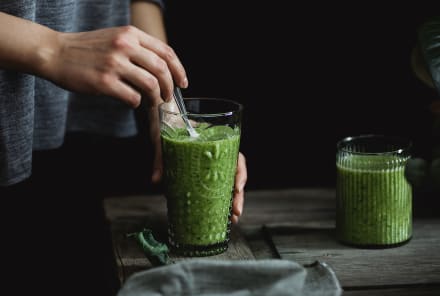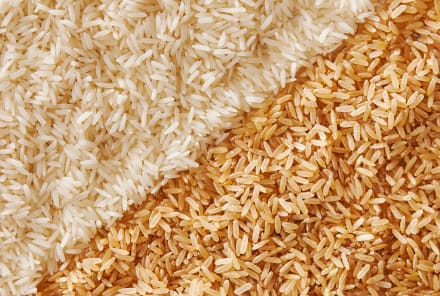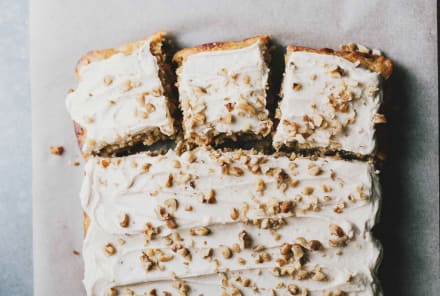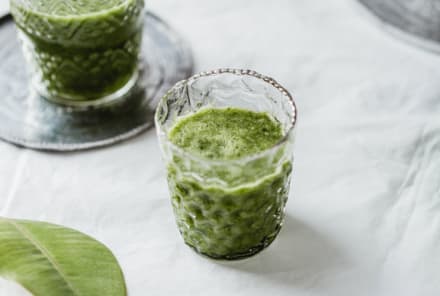Advertisement
The Two Best Dietary Changes You Can Make To Boost Gut Health

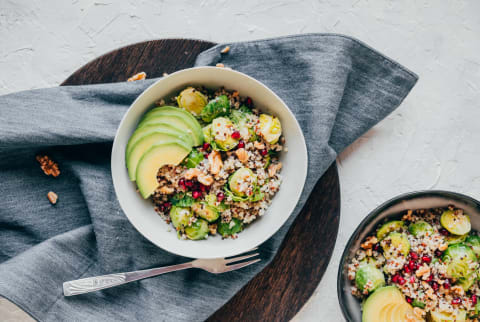
Paleo, keto, vegetarian, vegan? These days, sorting out what we're supposed to eat for optimal health can be incredibly confusing—with seemingly contradictory dietary approaches being touted as the end-all-be-all approach to wellness by different groups. But while we may never be able to agree on one "best" diet for everyone, we do know that supporting the gut is crucial.
That's because the trillions of microbes living inside our digestive tract create all sorts of compounds essential for optimal functioning, like neurotransmitters and short-chain fatty acids—but they can only do their job if we give them the proper fuel.
So, what's the most basic but effective way that people following any number of dietary approaches can fuel their microbiome? After interviewing a number of world-renowned microbiome researchers at the recent Gut Microbiota for Health World Summit 2019, I came to discover that one thing was quite clear: Sugar is out, and plants (lots of plants) are in.
Ditch the sugar—it's wrecking your gut.
Did you know the average American is consuming 17 teaspoons of sugar every day, whereas the recommended daily limit is just 6 teaspoons for women and 9 teaspoons for men? In addition to the known long-term consequences of high blood sugar (heart attacks, stroke, and infections, to name a few), there is now evidence directly linking hyperglycemia to leaky gut.
Even more complicated is the fact that sugar can be hidden under as many as 56 different names—from the deliberate "cane sugar" to more innocuous names like "maltodextrin." And, as you likely already know, sugar can be found in massive amounts in seemingly healthy foods such as yogurt, protein bars, and kombucha.
New forms of processed sugars are also being added to our foods that are not completely benign. Trehalose, for example, has been found1 to enhance the strength of a nasty diarrheal illness called C. difficile. And, don't forget about artificial sweeteners—they, too, seem to exert a negative impact on the microbiome, by altering the microbes that influence sugar metabolism.2
Load up on 30+ different plant foods per week.
Now that we know scaling way back on sugar is key, what should we actually eat to promote health and microbial diversity within the gut? Drawing from the American Gut Project and their work with the microbiome, one of the best guides is to start eating at least 30 different plant foods per week.
That's because eating more than 30 different plants per week has been associated with greater microbial diversity, in part because all these plants contain loads of fiber, and fiber is an essential fuel for good gut bugs. Additionally, eating a wide variety of plants helps feed specific microbes known as the short-chain fatty acid fermenters—aka the protectors of the gut that control inflammation and help regulate the immune system.
Plus, people who eat 30 plant foods per week have been shown to have significantly fewer antibiotic-resistance genes (which is important, given the rise of superbugs); a lower intake of linoleic acid, which is associated with increased risk of cardiovascular disease and obesity in large amounts; and a greater intake of antioxidant, anti-inflammatory, and otherwise health-promoting micronutrients like beta-carotene, folate, and vitamins A, K, and C.
How to make your meals (and thus, gut bacteria) more diverse.
After you've nixed most of the added sugars from your diet (read those labels carefully and watch for these sneaky sugar sources), it's time to increase the plant diversity in your shopping cart. Proactively find a new item (or two or three) to purchase every time you're food shopping. Besides the obvious fruits and veggies, you can look toward nuts, seeds, oats, beans, olives, chickpeas, lentils, herbs, fermented vegetables like sauerkraut and kimchi, and even cacao to meet this goal of 30 plant foods per week.
Use what's in season as a guide, and aim to make your plate as colorful as possible. Your best bet: visiting a farmers market. Springtime in NYC, where I live, is prime time for goodies like rhubarb, asparagus, and radishes. That said, don't be afraid to utilize frozen fruits and vegetables either, which can save you some serious cash without compromising on nutrients.
Breakfast
The easiest way to load up on plant foods at breakfast is with a smoothie like this cauliflower smoothie with blueberries and cinnamon. But if you need a break from your blended breakfasts, top off oatmeal, overnight oats, chia pudding, or a healthy pancake recipe with a variety of nuts, nut butters, seeds, and/or seasonal fruits. Alternatively, omelets featuring veggies like onions, peppers, mushrooms, and spinach are a great way to pack in a few different plant foods.
Lunch
For a lunch with loads of plant diversity, opt for a homemade soup, stew, salad, or grain bowl. This turkey soup with kale and white beans packs eight different plant foods along with gut-healing bone broth. To make your own gut-friendly grain bowl, simply top a cooked grain like quinoa or wild rice with a variety of cooked and/or raw veggies, nuts and seeds, fresh herbs, a high-quality protein of your choice, and a tasty dressing.
Dinner
For dinner, scale back a bit on the meat and bring foods that are usually considered sides to center stage by filling at least half of your plate with various veggies. Think: a small portion of grass-fed beef or wild-caught salmon served alongside a heaping portion of roasted Brussels sprouts, sweet potatoes, and beets—all cooked on the same sheet pan. Another simple veggie-packed meal? Basically any stir fry. And, if you are eating out and plant-heavy main dishes are lacking, you can always create your own entree by combining a few different veggie-based sides.
Watch Next
Enjoy some of our favorite clips from classes
Enjoy some of our favorite clips from classes
What Is Meditation?
Mindfulness/Spirituality | Light Watkins
Box Breathing
Mindfulness/Spirituality | Gwen Dittmar
What Breathwork Can Address
Mindfulness/Spirituality | Gwen Dittmar
The 8 Limbs of Yoga - What is Asana?
Yoga | Caley Alyssa
Two Standing Postures to Open Up Tight Hips
Yoga | Caley Alyssa
How Plants Can Optimize Athletic Performance
Nutrition | Rich Roll
What to Eat Before a Workout
Nutrition | Rich Roll
How Ayurveda Helps Us Navigate Modern Life
Nutrition | Sahara Rose
Messages About Love & Relationships
Love & Relationships | Esther Perel
Love Languages
Love & Relationships | Esther Perel

